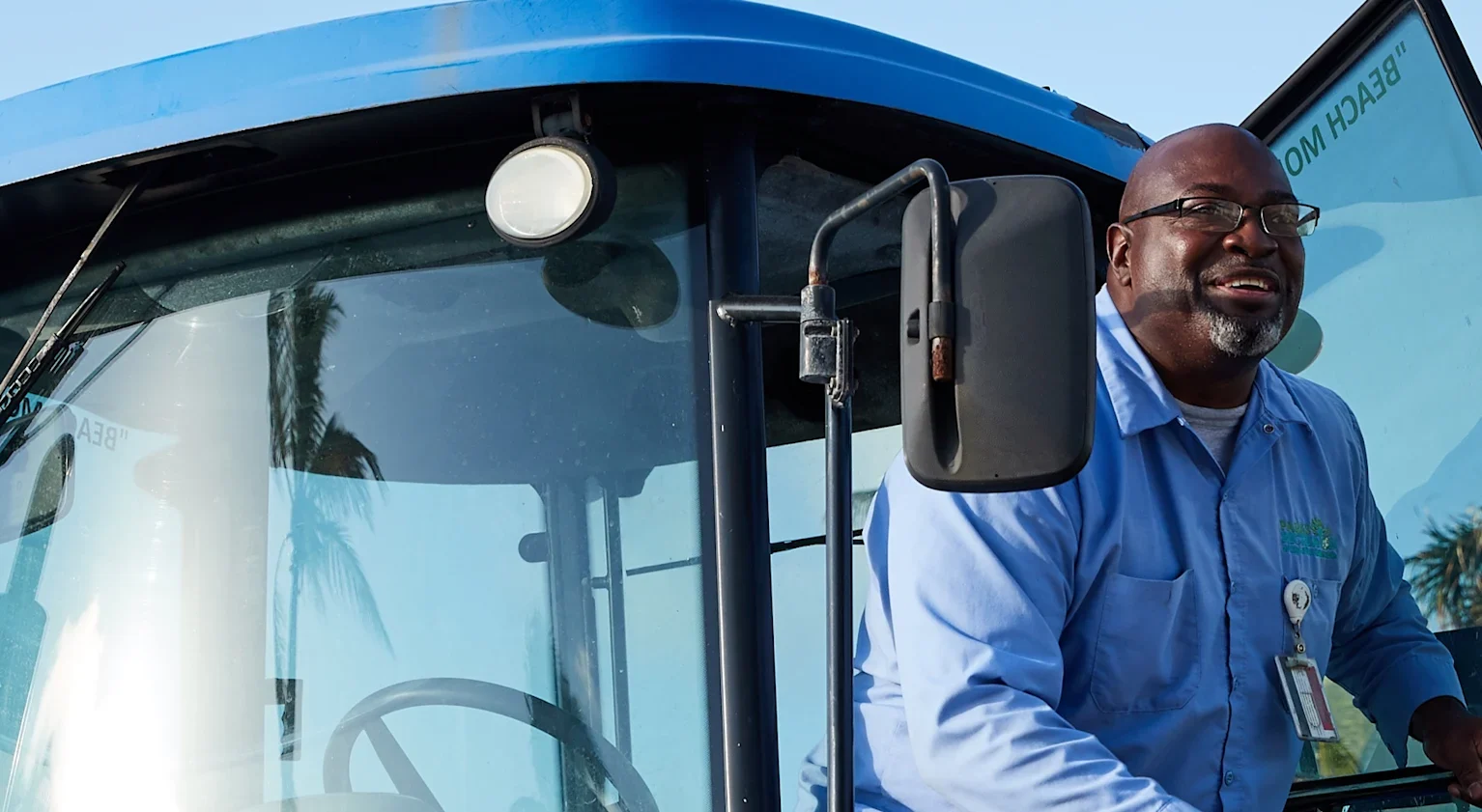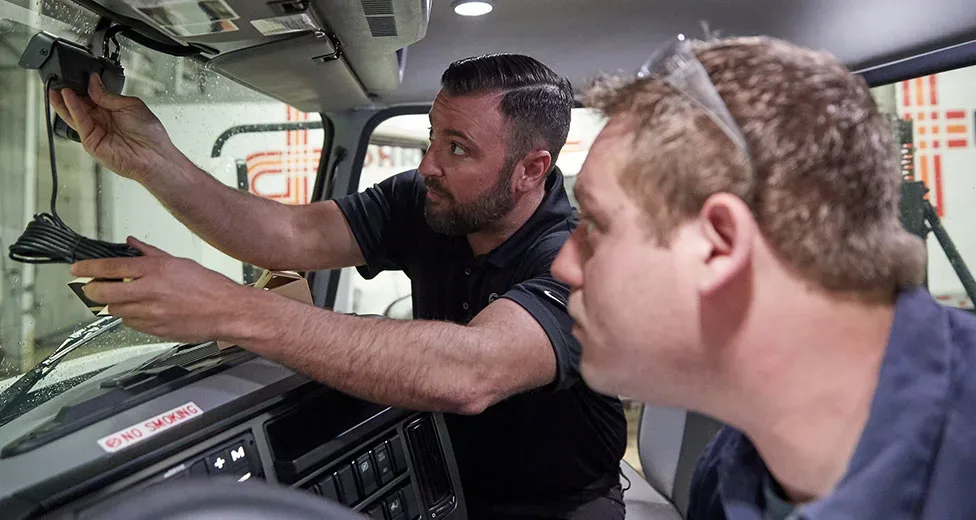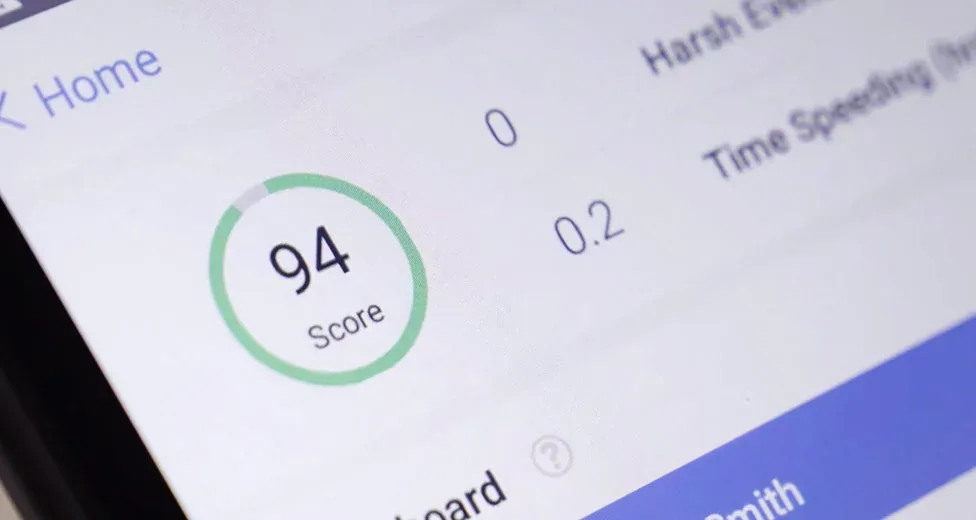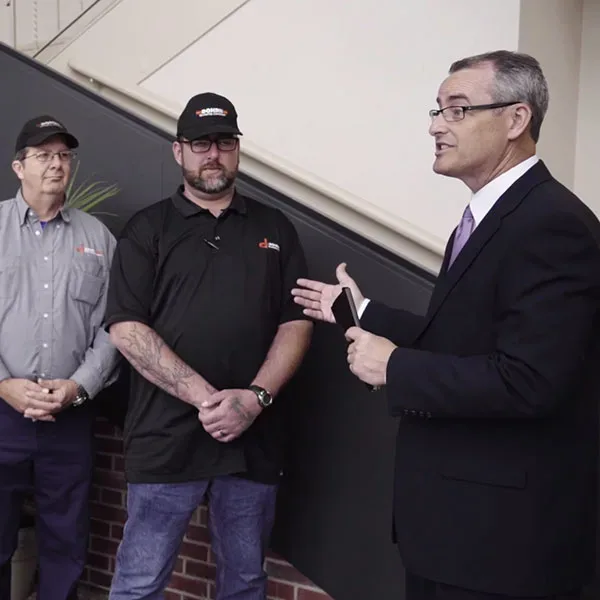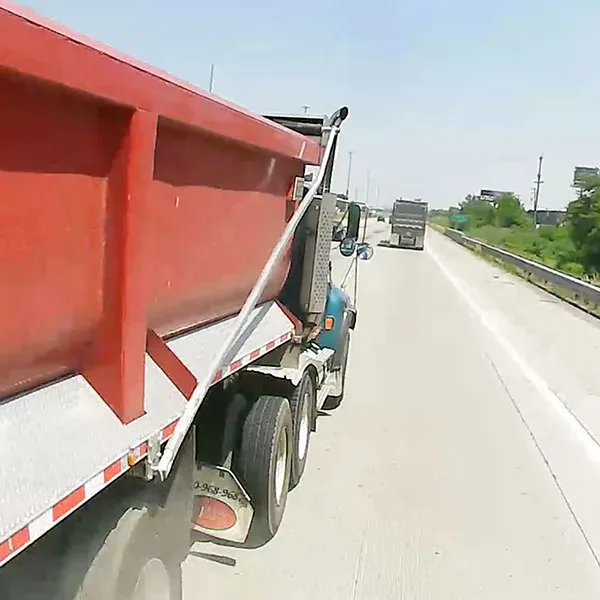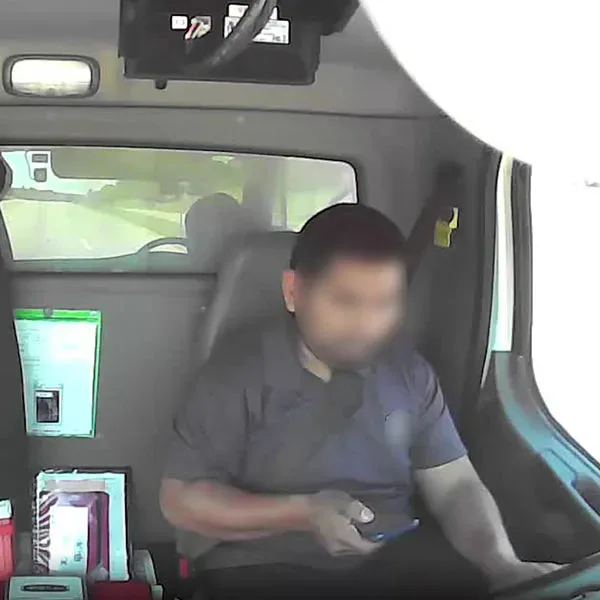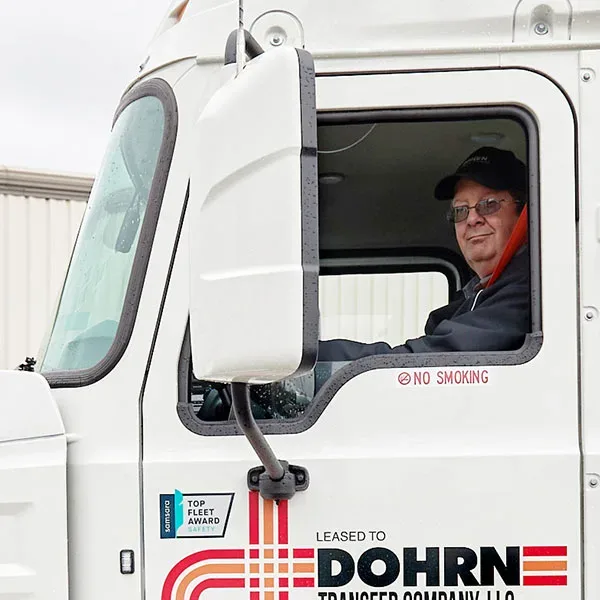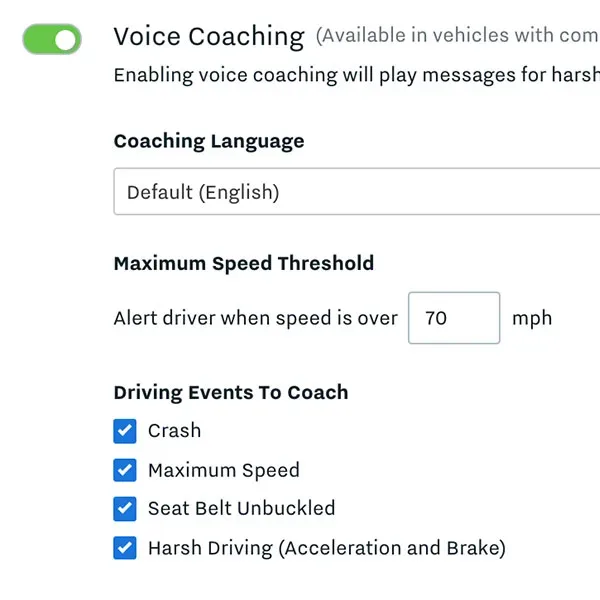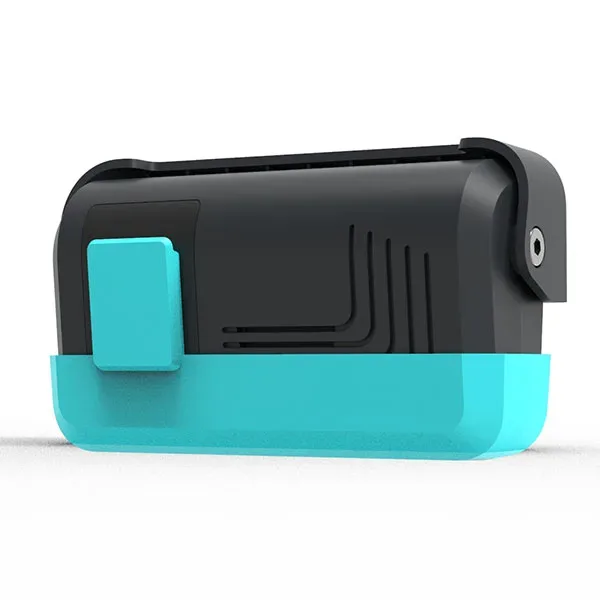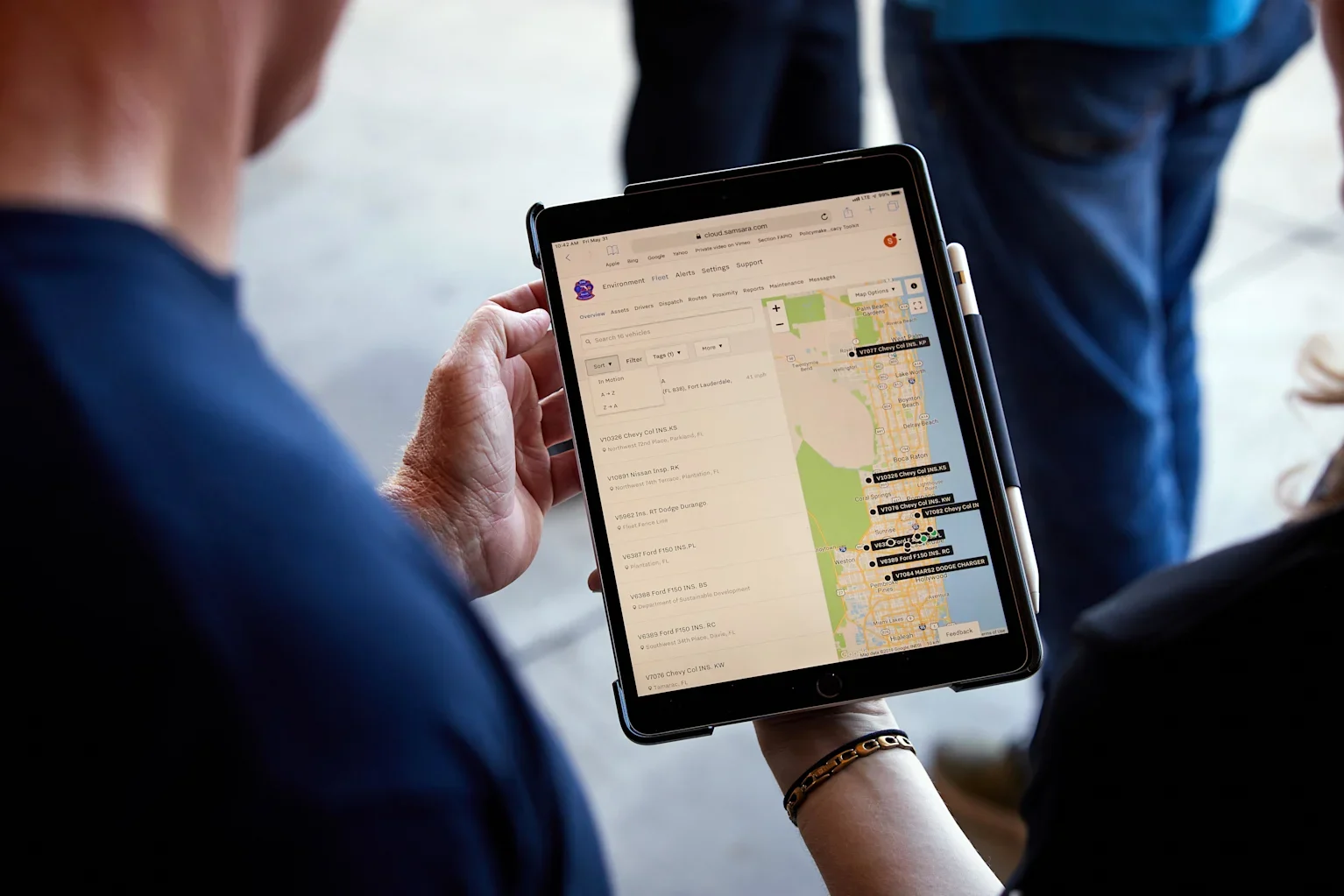Build an Effective Fleet Safety Program
Back to Main Menu
- Before You Begin
- Pre-Launch Planning
- Implementation and Rollout
- Day-to-Day Workflows
- Managing Impact
Why create a fleet safety program?
A fleet safety program is a coordinated, strategic initiative that combines video-based safety technology with consistent coaching to improve driver behavior, reduce accidents, prevent false claims, and lower costs. Keep reading to learn how to build an effective fleet safety program from start to finish.
How to select the best dash cams
Read more about the benefits of dash cams and how to select the best technology for your fleet.
Invest in a video-based safety solution
Before you begin, invest in technology that provides the visibility and data needed to enable a robust fleet safety program. The NSTSCE found that video-based safety solutions—which include dash cams as well as telematics for real-time GPS tracking—reduce safety-related events by more than 50% on average.If you haven't invested in a video-based safety solution yet, check out Samsara’s complete Video-Based Safety solution, which includes AI Dash Cams and robust driver coaching tools for improving driving habits and protecting your bottom line. It’s trusted by thousands of fleets, and in a survey of more than 500 Samsara customers, 90% said Samsara helped improve safety within their fleet.
Define your goals and create an implementation plan
After you’ve invested in a video-based safety solution, rolling out a successful fleet safety program requires thoughtful change management. The key to success is planning ahead: identifying problem areas, writing down your goals, and creating a clear timeline that your team can follow.
Identify problem areas
Most fleets create a safety program because they have a specific problem or pain point they’re eager to address, like a rise in at-fault accidents or noticeable increase in risky driving behavior. If you’re not sure where to start, review all of the safety-related incidents your fleet has experienced in the last six months—including accidents, claim payouts, and behavioral issues like distracted driving or cell phone usage—to see if you can identify any patterns. If you have a telematics or video-based safety system like Samsara installed that can detect safety-related events, this technology should be able to help you identify recurring driver safety issues.

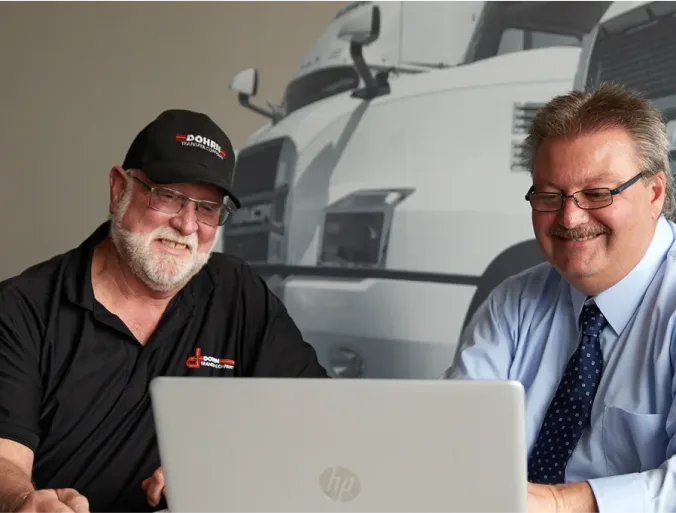
Write down 2-3 specific goals
Although writing down your goals may seem like an unnecessary formality, it’s widely accepted as a best practice for change management. In fact, an often-cited study found that you are 42% more likely to achieve your goals just by writing them down. Your goals should address the problem areas you identified above. For example, if your insurance premiums have increased, you may want to create a goal of reducing your at-fault accident rate. Whether you aim for a 5% improvement or 50% improvement will depend upon the severity of the problem and the difficulty of changing that specific behavior. Aim for goals that seem achievable but ambitious, and know that you can always adjust your goals in the future.
Create an implementation timeline
An implementation timeline can help you organize your efforts, align internal stakeholders, and ensure an efficient and successful deployment. When building your timeline, make sure to include phases (like “installation and training”) as well as key milestones (like “all safety managers and drivers fully trained”). Then, identify key milestones that you’ll need to complete before moving to the next phase, so you can proactively prioritize the milestones that matter most. If you have a large team, it may also be helpful to schedule a regular meeting to track progress and stay accountable to your plan. Below, explore our interactive timeline to get an overview of key phases.
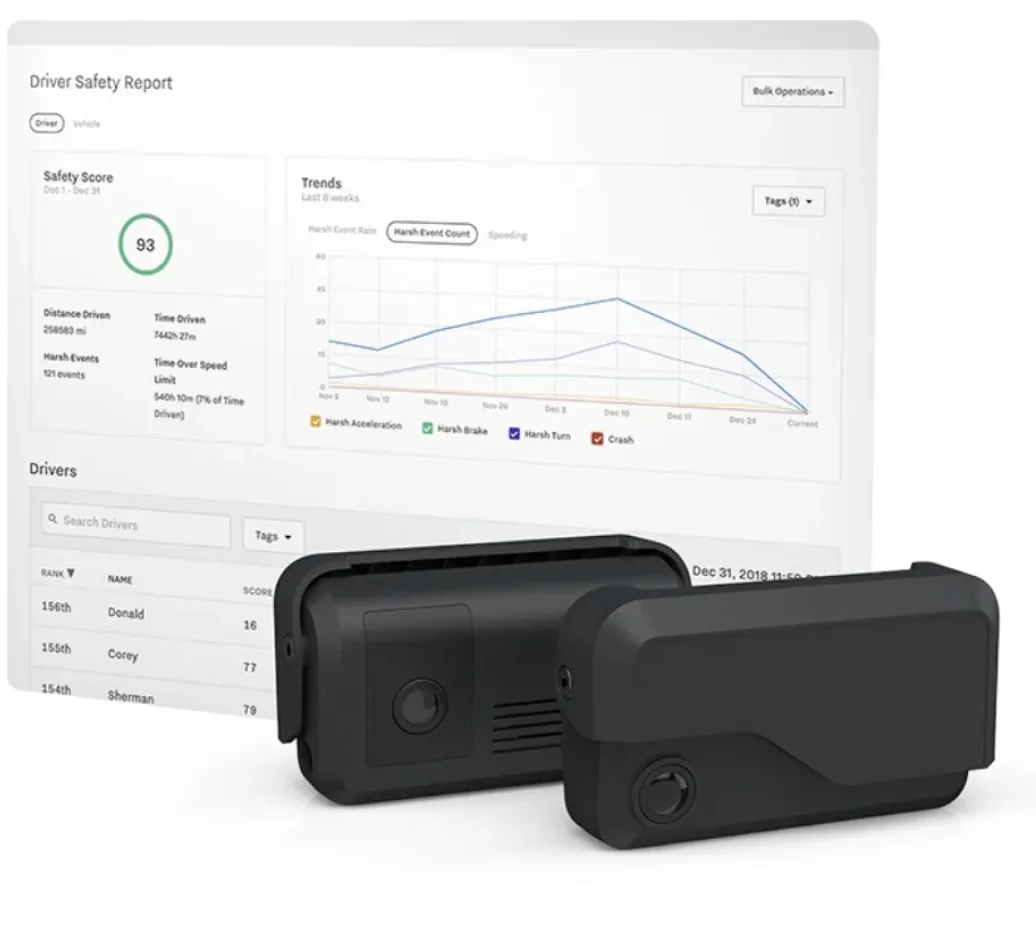
Common goals for fleet safety programs
Decrease
your at-fault accident rate, moving violations, or traffic violations
Minimize
costs associated with auto claims, property damage, and insurance premiums
Exonerate
innocent drivers from false claims
Improve
your CSA scores
Improve
driver retention and customer satisfaction
Create
a safety-first culture
Define the phases of your rollout
Before diving into implementation, it’s important to align key stakeholders around the phases of your rollout. For most fleets, rolling out a video-based fleet safety program consists of four phases:
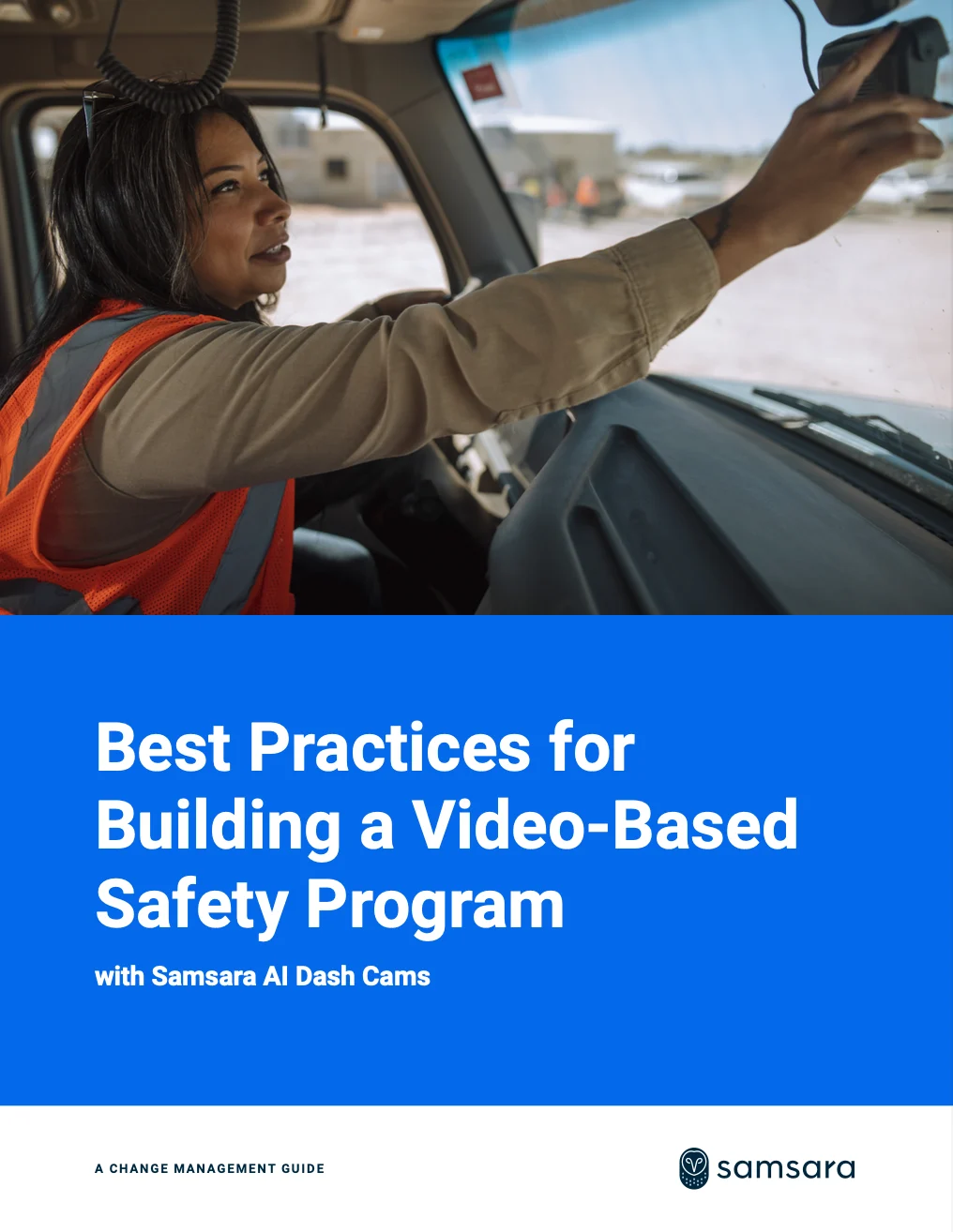
Change management guide
Best Practices for Building a Video-Based Safety Program
Learn how Samsara can help you implement a successful fleet safety program from start to finish. This step-by-step change management guide includes implementation best practices, easy-to-follow checklists, safety policy recommendations, and success stories from Samsara customers.
Get Your GuideCommunicate your new safety policy and train your team
The next step in building a successful fleet safety program is getting internal buy-in from your team, including executives, stakeholders, and drivers. Transparent communication is key—especially if you’re introducing dash cams for the first time. Before deploying your hardware, consider holding a company-wide meeting to introduce your new program and answer questions. Then, after deploying your hardware, take a phased approach to training your back-office team and getting buy-in from drivers.
Train your core team and supervisors first
The key to training your team efficiently and successfully is to do it in phases. At Samsara, we use a “train the trainer” approach; by empowering your core team and supervisors first, they can then train drivers and field staff. If your safety managers are headquartered in different locations, consider bringing them together for an in-person training session to learn how to use your new technology.
If you previously completed a trial of Samsara, build your training session around the workflows you found most effective during your trial period—like assigning safety-related events to specific managers for review. The goal of training is to evangelize a consistent safety policy that your entire team can enforce.
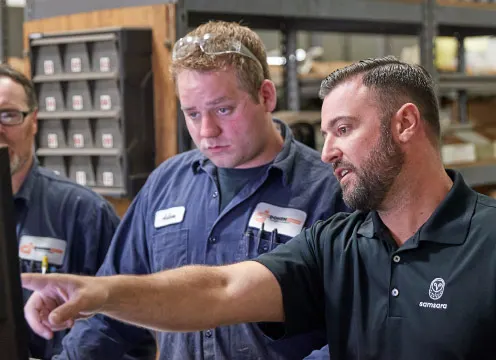

Get driver buy-in on dash cams
Drivers are often skeptical about having a dash cam in their cab. This is completely normal, but getting their buy-in during driver training is key to the long-term success of your fleet safety program. In fact, the NSTSCE has studied what sets excellent fleet safety programs apart from the rest. The answer? A shift from top-down control to bottom-up engagement. They found that the most effective fleet safety programs are initially led by management, but as drivers become more proactive and invested, their engagement is what drives significant safety improvements.
We’ve helped thousands of customers successfully roll out video-based safety programs. Below, check out our top nine tips for getting driver buy-in on dash cams.
9 tips for getting driver buy-in on dash cams
Overcome initial driver wariness with these tried-and-true best practices from our customers
Report
Towards Vehicle Safety Technology
Together for Safer Roads (TSR) surveyed over 500 professional drivers to find out what makes drivers reluctant to adopt in-cab camera technology and what can be done to positively influence perceptions. They found that 7 in 10 drivers equipped with in-cab technology find all forms of the technology acceptable.
Get the Report
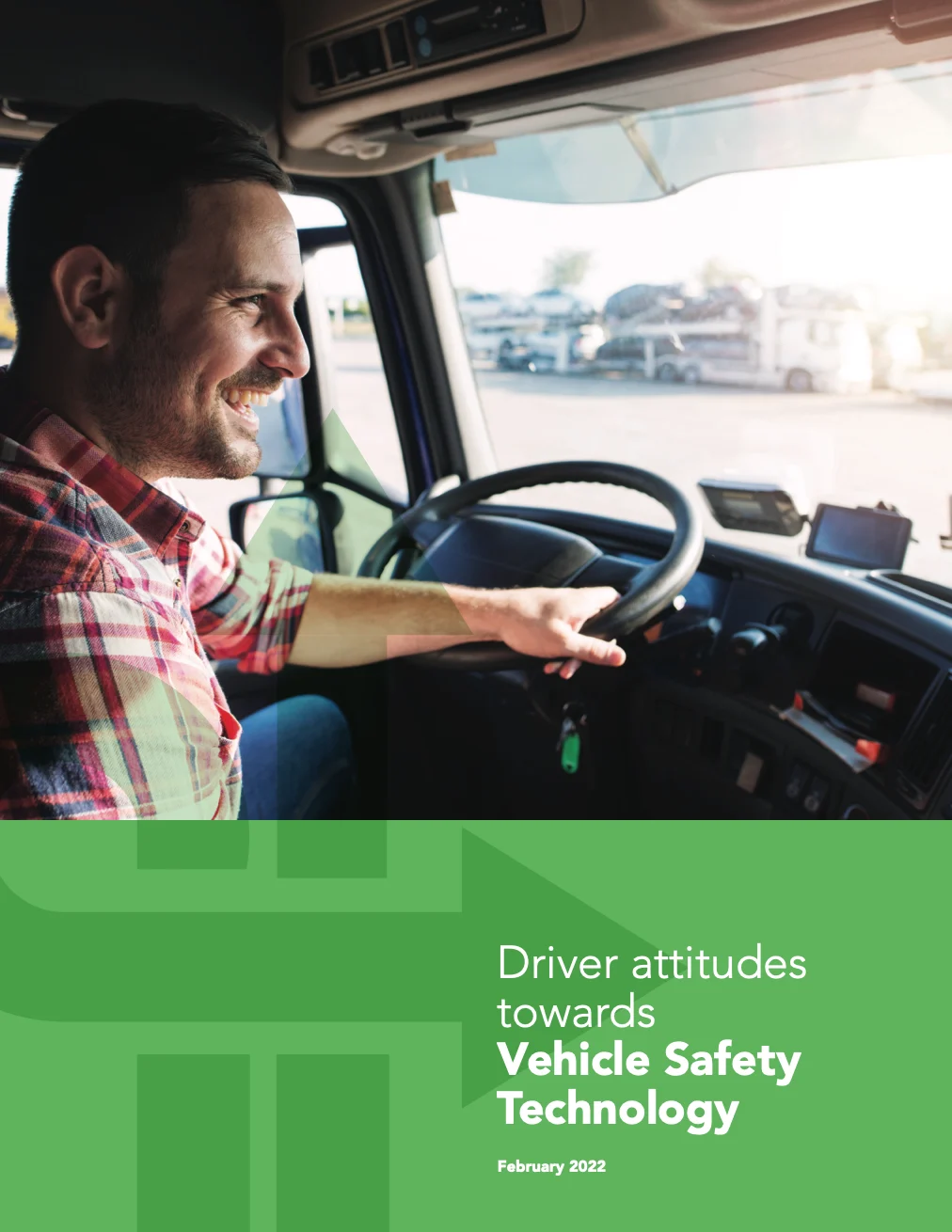
Improve driver behavior with consistent, data-driven coaching
Driver coaching is the backbone of any fleet safety program, but studies have shown that driver coaching is most effective when combined with data from a telematics system and video footage from dash cams. Building a consistent, data-driven driver coaching workflow into your day-to-day operations is the key to improving driver behavior, reducing accidents, and ultimately lowering safety-related costs.
Importance of Coaching
87%
of commercial vehicle accidents are caused by driver error
52%
fewer accidents occur when driver coaching and dash cams are used together
Set up alerts for targeted behaviors
Revisit your goals to determine which risky driving behaviors (like harsh braking, speeding, or distracted driving) you need to address. Then, help your back office focus on what matters most by setting up alerts, so fleet safety managers can immediately coach drivers on targeted behaviors. For example, with Samsara, you can set up real-time SMS or email alerts for a variety of safety-related events—including harsh acceleration, harsh braking, and rolling stops—as well as speed, so you can be notified when a vehicle exceeds a certain speed limit.
Give immediate feedback with in-cab alerts
Feedback is most effective when it’s delivered in a timely manner, especially for drivers who run long routes and may forget about harsh events by the time they are brought in for coaching. Make sure to choose a dash cam (like Samsara’s AI Dash Cam) that has a speaker and can play in-cab messages for things like harsh braking, speeding, and unbuckled seat belts. For maximum effectiveness, wait 1-2 weeks after installing your hardware before turning on voice coaching so drivers don’t become overwhelmed.
Establish consistent coaching workflows, especially for corrective actions
Some risky driving behaviors are more serious than others. Determine what requires a short conversation and what requires something more serious, like an in-person meeting. Maximize your impact by regularly coaching all drivers in group sessions and reserving 1:1 coaching sessions for drivers who dip below a predetermined safety score threshold. Then, document your best practices and give coaches standardized scripts for responding to different types of harsh events, so that coaching isn’t biased.
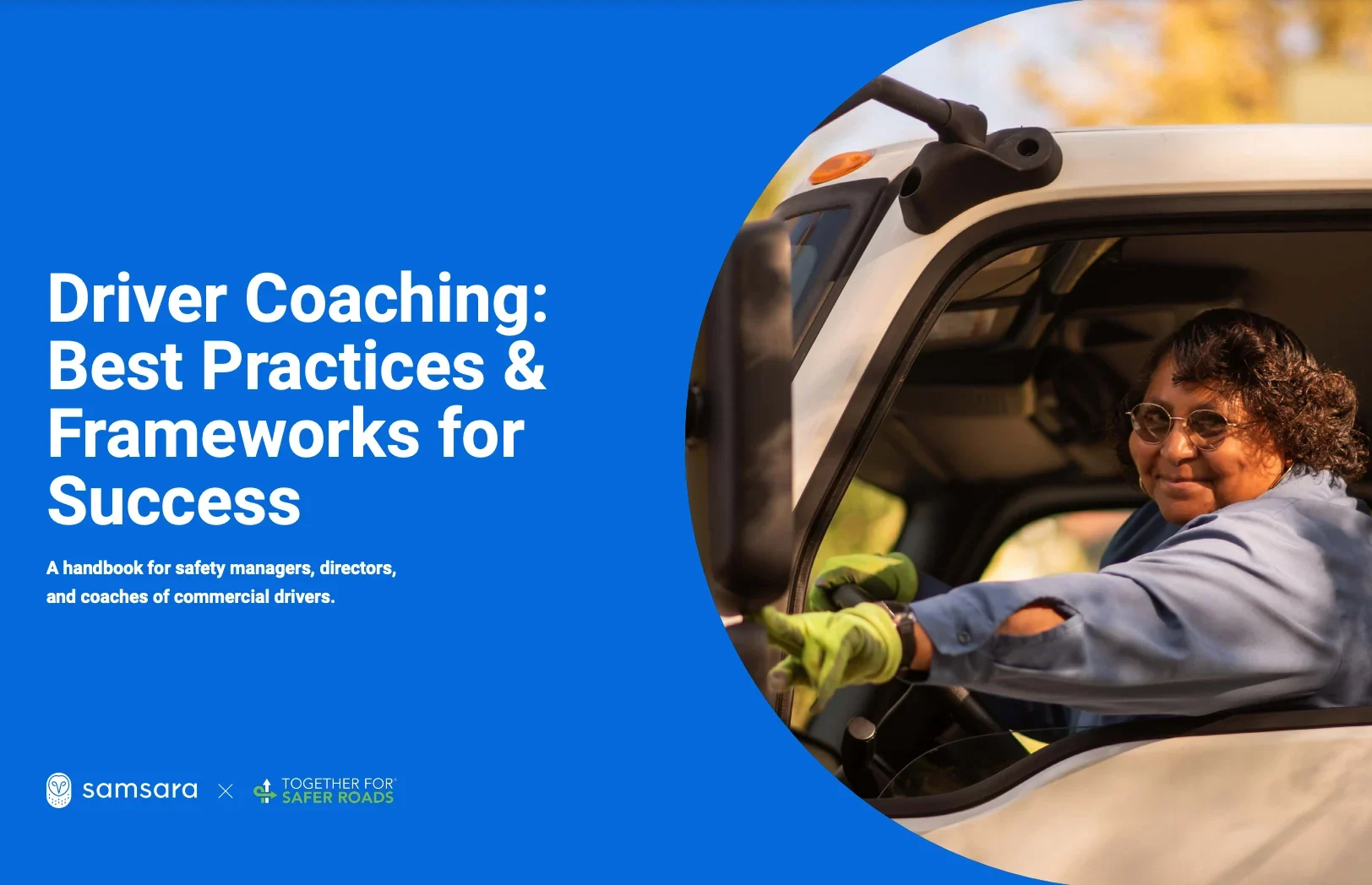
Handbook
Driver Coaching: Best Practices & Frameworks for Success
Ready to empower your drivers to become safer and more efficient? Our comprehensive driver coaching handbook can help you enhance your fleet safety and performance—whether you’re starting from scratch or improving on an existing program. This handbook includes best practices from industry experts, practical checklists, and tactical insights from our experienced customers.
Get your Handbook
See how Samsara’s coaching tools improve driver safety
Identify and manage coachable driving moments, and give drivers personalized, video-based feedback to improve future performance.
Learn More
Watch Video
Create a positive safety culture with driver performance rewards
One of the best ways to maximize the impact of your fleet safety program is to introduce driver performance rewards—bonuses, plaques, gift cards, or other incentives that are awarded to your safest drivers. Rewards are a great way to incentivize safe driving, share the benefits of a safer fleet with your drivers, and improve driver retention. Although you can introduce a rewards program at any time, the earlier the better; rewards are extremely helpful for getting driver buy-in and creating a positive safety culture.
Start by tracking driver safety scores
RelaDyne uses Samsara’s Driver Safety Scores—which are automatically calculated based on a combination of different safety behavior metrics—as the foundation of their fleet safety program. By gamifying their safety experience, RelaDyne improved their average Driver Safety Score by 14% within the first year. These safety improvements have also benefited RelaDyne’s bottom line; on-demand footage combined with proactive driver coaching workflows helped them save $350,000 in insurance claim costs and an estimated 180 hours spent processing claims in just one year.
Read Case Study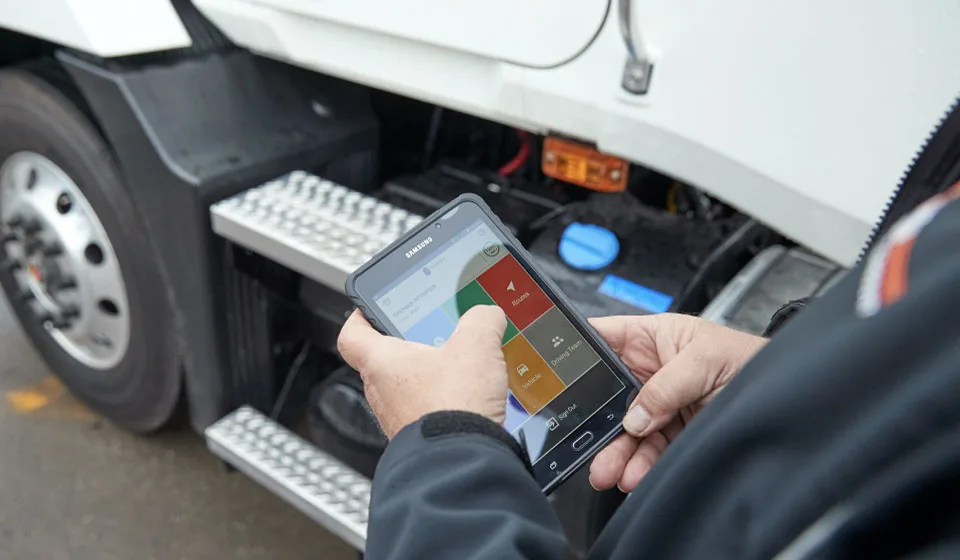
Why Rewards Work
79%
of employees work harder when they feel recognized
83%
of employees feel more engaged when they get rewards
Create friendly competition through gamification
Countless studies have shown that when an activity is more fun, people are more likely to do it. For example, when taking the stairs becomes a game, 66% more people choose to take the stairs rather than an escalator. This is called “gamification”—and it plays into human psychology in a way that’s extremely effective. In the Samsara Driver App, for example, you can turn on gamification to create a virtual leaderboard that ranks drivers by safety score. This makes it easy to see top performers, encourage friendly competition, and motivate drivers to improve their ranking.
Offer compelling rewards
To maximize engagement, the rewards you choose should be attractive and relevant. Make sure you customize the incentives to fit your company culture. Remember that each prevented accident represents thousands of dollars in saved costs, so allow drivers to share in some of those savings by rewarding top performers with monetary gifts, special privileges, or other prizes. Depending on your team, consider announcing the winner during team meetings, creating a safe driver “wall of honor” in the break room, or even sending a congratulations email company-wide.
Gift Card
Wall of Honor
Invite-Only Breakfast with Leadership
Company-Branded Gear
Company-Wide Recognition
Extra Vacation Days
eBook
How to Build a Driver Safety Rewards Program
Learn how to implement an incentive-based safety program to help your drivers practice safe driving.
Get your eBook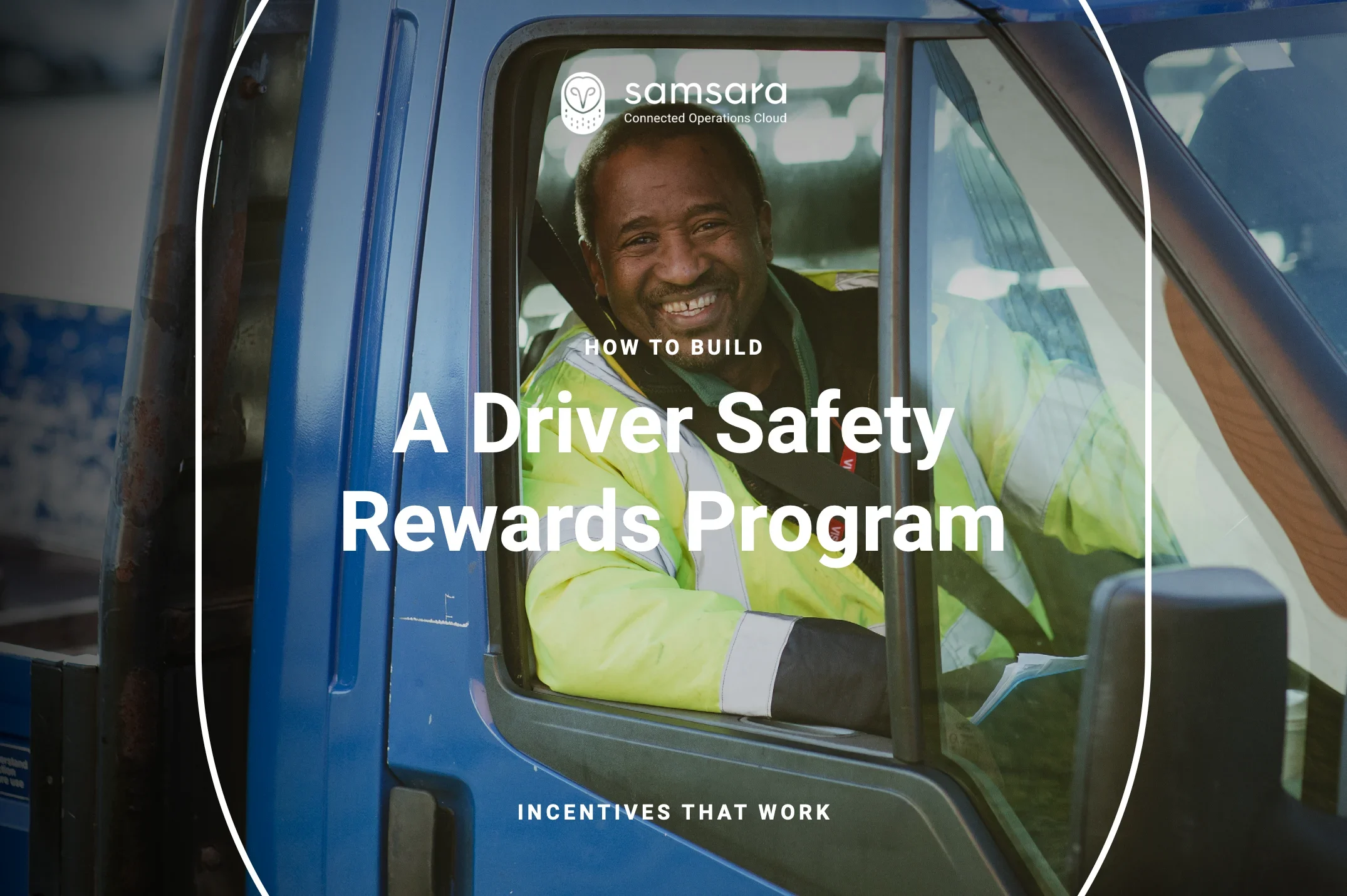
Make fleet safety a priority with Samsara
Samsara offers an all-in-one platform for improving fleet safety, empowering drivers, and reducing costs.
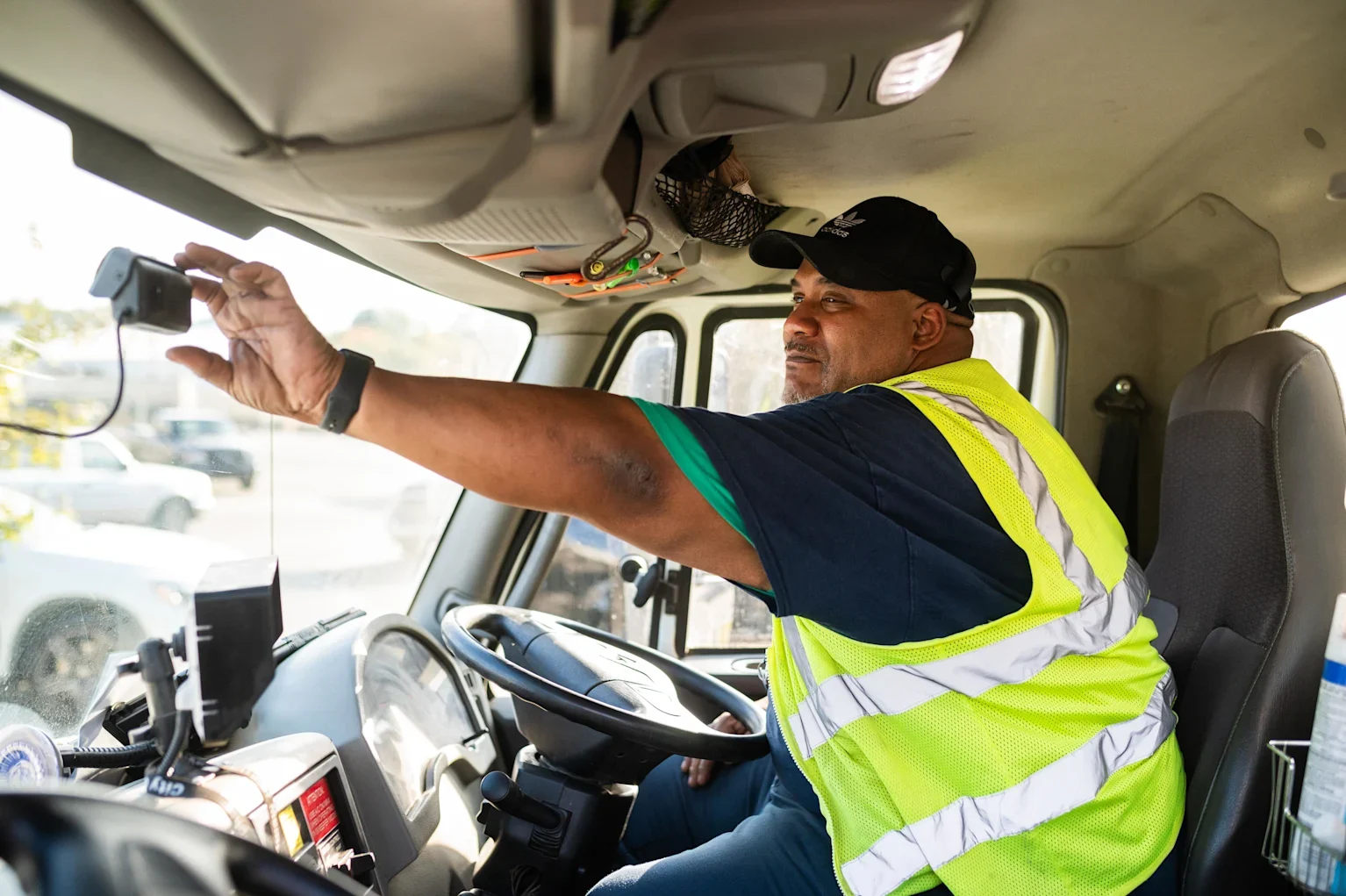
Protect drivers in the moments that matter with Samsara AI Dash Cams, which empower fleet drivers to build safe habits with real-time coaching. Samsara’s robust coaching and reporting tools make it easy to optimize driver performance and maximize coaching effectiveness.
9 out of 10 customers say Samsara helped improve safety within their fleet
Learn More